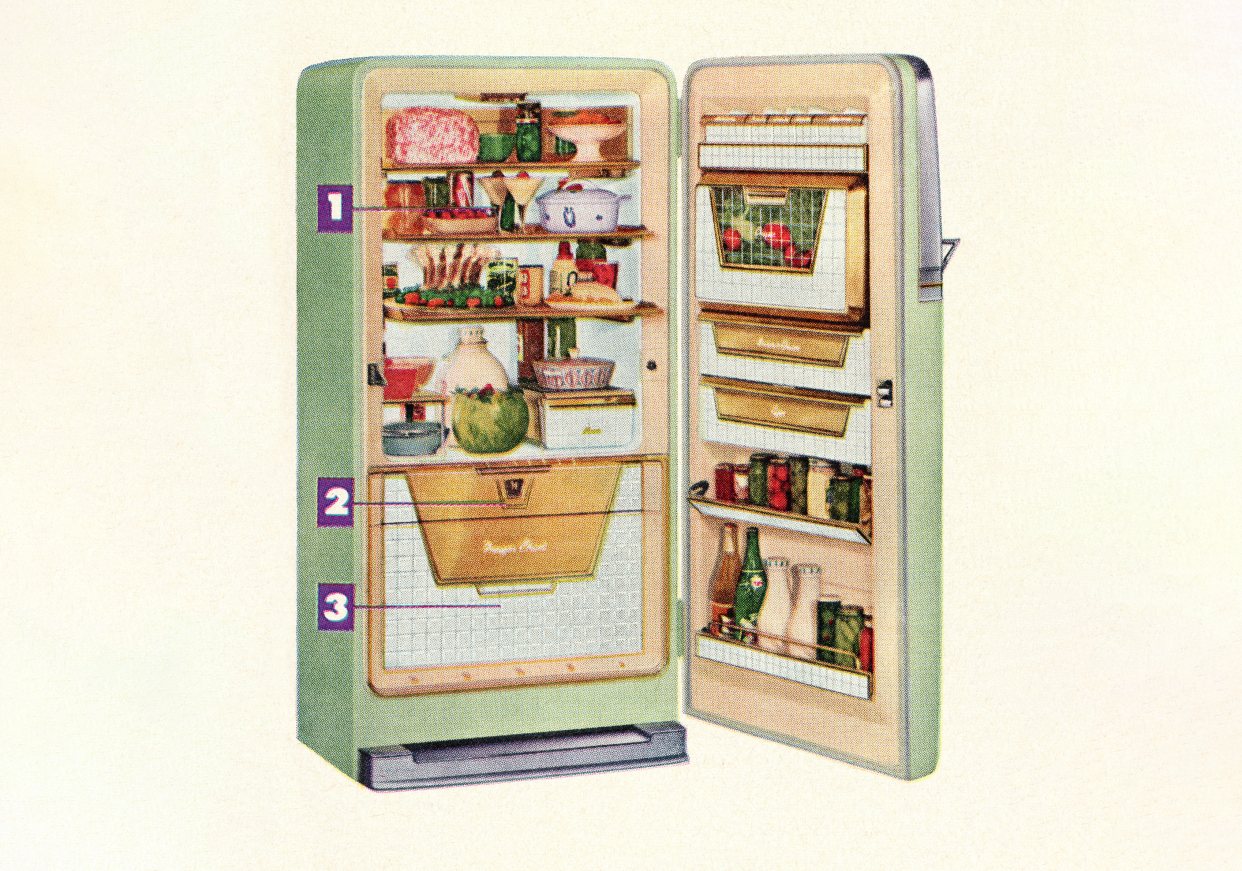Can You Put Hot Food in the Fridge—Or Could It Make You Sick?

CSA Images/Getty Images
You know that leaving leftover pizza on the kitchen table overnight and then eating it the next morning probably isn’t the safest bet. So it should hold true that the reverse—immediately putting piping hot leftovers in the fridge—is the better way to go…right?
Sounds good in theory, but sticking steaming, just-cooked meals right into the fridge raises its own set of questions. Namely, does it mess with the food’s ability to cool down properly? And can it warm up the leftovers already in the fridge to the point that they’re no longer safe to eat? SELF connected with a few food safety experts to find out.
There are some solid reasons to keep your leftovers cold.
Before we get into the safest way to refrigerate your meal, let’s take a step back to talk about why it matters: Cooling leftovers properly “is a really important component of food safety,” Nicole Richard, MS, a food safety research associate at the University of Rhode Island and the chair of the RI Food Safety Task Force, tells SELF.
Doing so limits the amount of time your dish hangs out in the “danger zone,” or that temperature limbo between 40 and 140 degrees Fahrenheit in which pathogenic bacteria—bugs that can cause disease—flourish. When you’re dealing with cooling food, the main threat comes from two specific species, Clostridium perfringens and Bacillus cereus, Donald Schaffner, PhD, chair of the Rutgers University Department of Food Science, tells SELF.
Those bugs are different from notorious food-poisoning players like salmonella and E. coli, which are killed by thorough cooking. C. perfringens and B. cereus, on the other hand, can form heat-stable spores capable of surviving high temperatures, meaning they can lurk even in properly cooked meals, according to Dr. Schaffner. These bacteria can multiply if the food hangs out in the danger zone for too long and can make you sick, Dr. Schaffner says. The result? Gnarly food poisoning symptoms like vomiting and diarrhea.
Some foods are higher-risk than others, according to Dr. Schaffner. These include meat and poultry (associated with C. perfringens) and grain products like rice and pasta (linked to B. cereus). So if your leftovers include steak, spaghetti, or paella, for example, it’s even more crucial you cool them properly.
So does this mean sticking leftovers in the fridge ASAP is your best bet?
Not necessarily. Proper cooling is crucial to preventing food poisoning, but you can take some time to refrigerate your leftovers—just not too long. Food should be just fine to sit out for up to two hours, says Dr. Schaffner.
In fact, it’s probably best practice not to refrigerate leftovers right away, he says. For one, it actually doesn’t speed the process along in any meaningful way. Hot food will actually cool almost as fast on the counter as it will in the fridge, Dr. Schaffner says, because the difference between the temperature of the food and that of the room is “not that much bigger.”
What’s more, placing a searing metal pan or dish on a glass shelf in the refrigerator could potentially cause the glass to shatter due to thermal shock, the term for a sudden and pronounced change in temperature, Dr. Schaffner says. And it’s also possible that refrigerating extremely hot food could potentially (very temporarily) raise the overall temperature of the fridge—as in, to more than 40 degrees Fahrenheit, Richard says. But even if hot food does cause the fridge’s internal temperature to rise above that 40-degree mark, it likely won’t stay in that danger zone long enough to pose a problem before the temp drops back to baseline, according to Richard. “It’s probably not going to really impact the safety of what’s in there,” she says.
What matters more than refrigerating food ASAP is storing it correctly.
As long as you’re not leaving leftovers out for more than two hours, how you’re stashing them in the fridge is going to likely be more important than trying to race a countdown clock to stick them in right away. Basically, your goal is to store them in such a way that they cool rapidly.
The first thing to keep in mind: You don’t want to transfer that big pot of soup or stew, or a hefty cut of meat, directly to the fridge. Portioning it out is going to be way safer. Look for shallow individual containers about the height of a credit card, Dr. Schaffner says. Since the rate at which a food cools is directly proportional to the depth of it, he explains, keeping that to two inches or fewer can help make sure your leftovers get “down to the refrigerator temperature quickly enough to avoid the growth of any potentially pathogenic bacteria that might be in the food.”
Store your containers uncovered or loosely covered, according to Richard. This will allow the warm moisture to escape, a process known as “evaporative cooling,” Dr. Schaffner says. (Once your food has cooled, though, make sure you cover it to avoid any cross-contamination, Richard says.)
Finally, location matters, too. Pop your leftovers on the top shelf of the refrigerator, according to Dr. Schaffner. Since heat rises, putting your food at the highest point eliminates the possibility of warming up items above it, he says.
Taking these steps, the experts say, is a major way to keep yourself safe in the kitchen. And, considering that an estimated 48 million Americans develop food poisoning every year, it’s best not to chance it. So to reduce your risk of joining those pukey, pooping ranks, keep these tips in mind next time you’re making a meal—especially a big batch.
Related:
Here’s the Biggest Reason for Foodborne Illness at Restaurants
How to Host a Summer Picnic Without Giving Everyone Food Poisoning
Are ‘Triple-Washed’ Bagged Greens Really Safe to Eat Without Rinsing?
Originally Appeared on SELF

